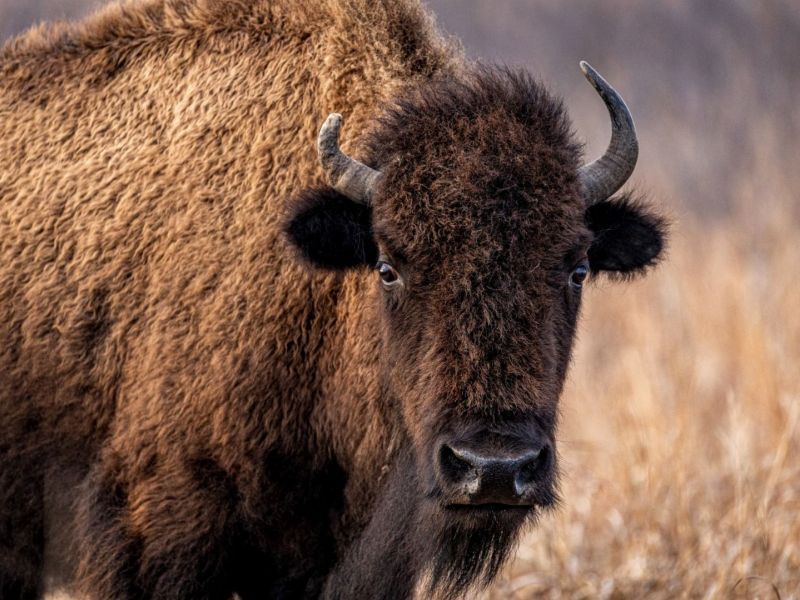A Natural Choice
Bison... A Healthy Natural Choice
Consumers are becoming more knowledgeable about food safety issues and demand a safe, healthy, natural source of food. Bison are naturally fed pasture grasses. Some bison receive supplemental forage (hay and silage) and grain (primarily oats) during extreme weather or during droughts when pastures are dry. Combination feed grain and forage rations are sometimes used to mimic optimal pasture conditions and “finish” animals for a brief period just prior to their entry into the food system.
The bison industry has been working on programs that guide our producer’s management practices and build consumer confidence in our product.

Working With Nature
Bison are ideally suited for the northern climate found in Canada. Their extra fur cover on the shoulders, plus the extra development of the front half of their body allows them to turn towards the wind and storms of winter. They are also able to push through the snow cover of the prairies with their large head and muscles to find the grass beneath for grazing. And, they require less food in the winter months because their metabolism slows. You won’t find a bison migrating south for the winter!
Sustainable Agriculture
The reintroduction of bison to the Canadian plains by farmers, ranchers and conservation agencies has been a positive development for the environment. Following the near destruction of Canada's bison herds in the late 19th century, millions of hectares of the native grassland habitat of the prairies was converted to growing grain. The prairie sod, with its rich mosaic of animals and plants, was drastically altered to support the production of a handful of agricultural crops - primarily wheat.
Conservation Success
Prior to European settlement, millions of bison roamed the plains of North America – with the numbers on the Canadian prairies alone estimated as high as 10 million animals. The herds were so vast that early European travelers to the region often reported that their wagon trains could travel for days without losing sight of buffalo herds. But that would end -- by the close of the 19th century there were virtually no plains bison left on the Canadian prairies. The mass extermination was primarily the result of unrestricted hunting and weak, largely un-enforced government conservation measures. The Canadian herds could not withstand the combined pressures of subsistence hunting by native people and the fur trade's demand for buffalo hides and pemmican.






